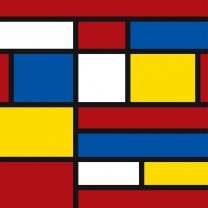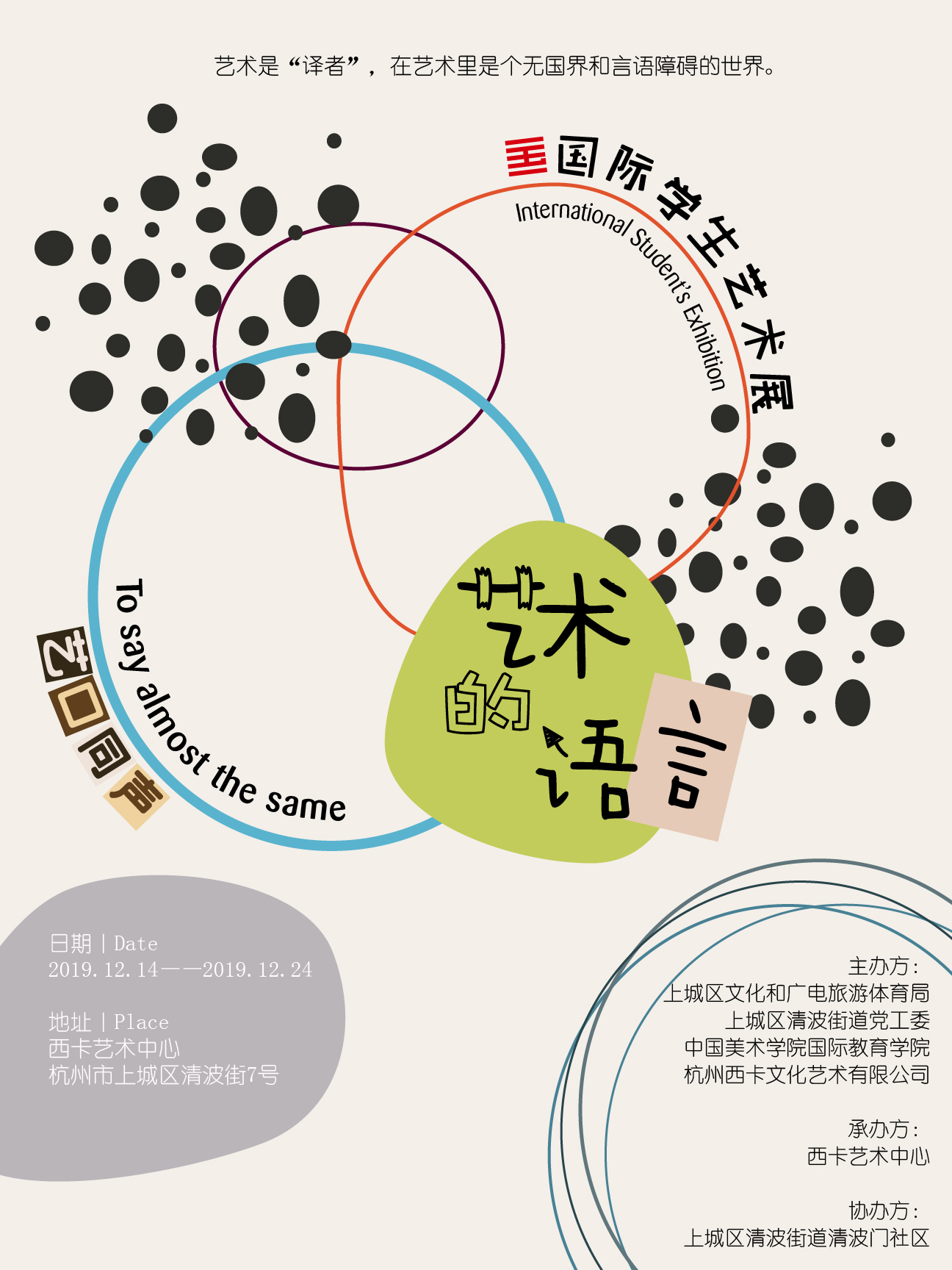作品系列
“艺口同声”—— ——中国美术学院国际学生艺术作品展
- 展览时间:2019-12-14 - 2019-12-24
- 展览城市:浙江-杭州
- 展览地点:上城区清波街7号
- 策 展 人:Juaniko焕尼克
- 参展人员:
展览介绍
展览时间:2019-12-14 - 2019-12-24
展览城市:浙江-杭州 展览地点:西卡艺术中心(杭州市上城区清波街7号) 策 展 人: Juaniko Moreno 焕尼克 参展人员: Ana Curk(Serbia 塞尔维亚)、Ashley Cristiano(USA 美国)、Atiya Kulkobkiat(Thailand 泰国)、Carla Guzman(USA 美国)、Charles Tercier & Diana Bou Dakka(Switzerland 瑞士 & Lebanon 黎巴嫩)、Claudio Lucchi(Canada 德意加拿大籍)、Davor Dmitrovic(Croatia 克罗地亚)、Devin Junior(Indonesia 印度尼西亚)、Dunja Karanovic(Serbia 塞尔维亚)、Mojin Jhony(Bangladesh 孟加拉)、Tong Fung Chuar(Malaysia 马来西亚)、Tresor Meno(Democratic Republic of Congo 刚果民主共和国)、Zuha Rasheed(Maldives 马尔代夫)、安智恩(South Korea 韩国)、川端景司(Japan 日本)、林维业(Malaysia 马来西亚)、丸川直人(Japan 日本)、温子建(Malaysia 马来西亚)、西海望(Japan 日本)、尹韩素(South Korea 韩国)、Edmond Muhozi(Rwanda 卢旺达)、Elena Geleva(Macedonia 马其顿)、Gherdai Hassell(Bermuda 百慕大)、Giacomo Bruni(Italy 意大利)、Huang Li Xian(Singapore 新加坡)、Kim Nanhee(South Korea 韩国)、Kristel Sinson(France 法国)、Ler Jia Ying(Singapore 新加坡)、Michael Cavayero(USA 美国)、David Han(USA 华裔美国籍) 展览介绍 无论一个艺术家的背景或创作媒介如何,他承担的角色总是多面的。也许把艺术家的角色称之为“沟通者”更为贴切:即一个用不同的表达策略表达想法的人。他不是凭空出现的,而他们的所做的“沟通”也会变成一种“诠释”,蕴含着他们自己的履历、经验、技能、社会和文化背景。The role of the artist is multifaceted regardless of its background or medium of preference. Perhaps the role to better describe it is the one of the “communicator”: someone that has something to say and uses different strategies to do so. Artists do not create in the void, and this “communication” they do turns rather into an “Interpretation“: Of their own history and experiences, their skills, social and cultural context all at once.
因此,艺术家的创作是一场把世界上的一种符号转化成另一种能被我们的思想和情感所理解符号的持续不断的斗争。这个角色就好比是“翻译”一样,把文字转化为图像,地方转化为歌曲,记忆转化为笔画,思想转化为物质。
As such, artist’s work is then a constant struggle to take certain signs present in the world and transform them into others, understandable by our minds and sensibilities. Words into images, places into songs, memories into strokes, thoughts into matter. This role might as well be compared to the one of the “translator”.
翁贝托·艾柯在他的《 “To say almost the same”》一书中深入探讨了译者的任务,并解释了为什么翻译只能试图让另一种语言说“几乎一样的话”。翻译是一个在符号、文化语境、习俗和同源意义之间不断推敲的过程。它可以是不同语言间的(在两种口语或书面语之间),同一语言内的(在同一种语言内,但需要像归纳总结一样重构意义),或符号间的(在两种不同的符号学语言之间,即从小说到电影,或从诗歌到绘画)。而译者所承担的这些角色,也可以说就是艺术家的日常工作。
In his book “To say almost the same”, Umberto Eco delves into the task of the translator, and explains how translation can only but aspire to say “almost the same” in another language. It is a constant negotiation process, between interpretation and transmutation of signs, cultural contexts, customs and homologous meanings. Translation can be interlinguistic (between two spoken or written languages), intralinguistic (within the same language but reformulating the meaning, like making a summary) or intersemiotic (between two different semiotic languages, which is to say, from a novel to a movie, or a poem to a painting). All of those roles and characteristics of a translator, may as well describe the daily work of an artist.
用这些角色来定义中国美术学院的国际学生的情况更是恰如其分,因为国际学生正面对的是他们的故国和现在生活的环境、他们的母语和正在学习的语言、或者是通俗文化符号、人际关系和他们自己想象中不同维度之间的多层次的翻译、诠释和交流。
The international student condition in the China Academy of Art could not be more accurately defined by all of these roles. Students are faced with multiple levels of translation, interpretation and communication between their home context and the one they live in, their mother tongue and the ones they are learning, or the different dimensions to the symbols in popular culture, human relations and their own imaginaries.这次展览我们挑选了一些优秀学生作品来更好地展现艺术家在这种不同“语言”之间推敲的日常工作。不但希望在展现出来的多样性中,观者能够寻得些许克服语言桎梏的门径,并进一步了解艺术家作为个人和作为一个整体所拥有的不同含义。更盼望在此能找到一种“超语言”:一种可以联结其他语言但又不限制自身的语言,一种能随着含义自然流淌但又不被编入字典的语言,一种既代表已知又能代表未知的充满生命力的语言。
For this show, we have selected some outstanding works of those students, which better portray this daily negotiation between “languages”. We hope that within the diversity here shown, the spectator can find several gateways to overcome the boundaries of language and access the complex and polysemic nature of the artists, both as individual and as a collective. We aspire to find a “supra-language”, a language that accesses to all others but refrains from limiting itself, a language that flows through meanings but cannot be indexed into a dictionary. A living language of both the certain and the unknown.








